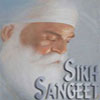Why such things happen?
If anyone can tell solution to this thing so that this never happens with
any community,any religion.
Waheguru ji ka Khalsa
Waheguru ji ki Fateh
Delhi Riots: a woman's account
4 posts
• Page 1 of 1
Delhi Riots: a woman's account
Waheguru Ji Ka Khalsa!
Waheguru Ji Ki Fateh!!!
Waheguru Ji Ki Fateh!!!
-

admin - Site Admin
- Posts: 224
- Joined: Fri May 11, 2007 4:10 pm
- Location: Punjab
Re: Delhi Riots: a woman's account
How it can be stopped?
So that it will never happen to
any Sikh,Hindu,Muslim,Chirstan(human)
So that it will never happen to
any Sikh,Hindu,Muslim,Chirstan(human)
- Ekonkar
- Guru Da Pyara
- Posts: 22
- Joined: Tue Nov 11, 2008 2:43 pm
4 posts
• Page 1 of 1
Who is online
Users browsing this forum: No registered users and 16 guests
